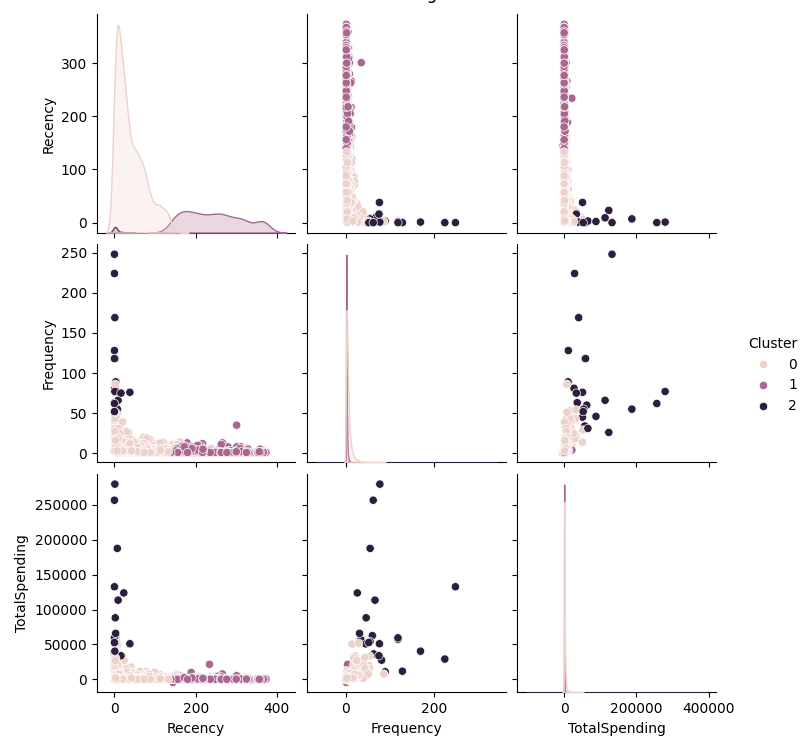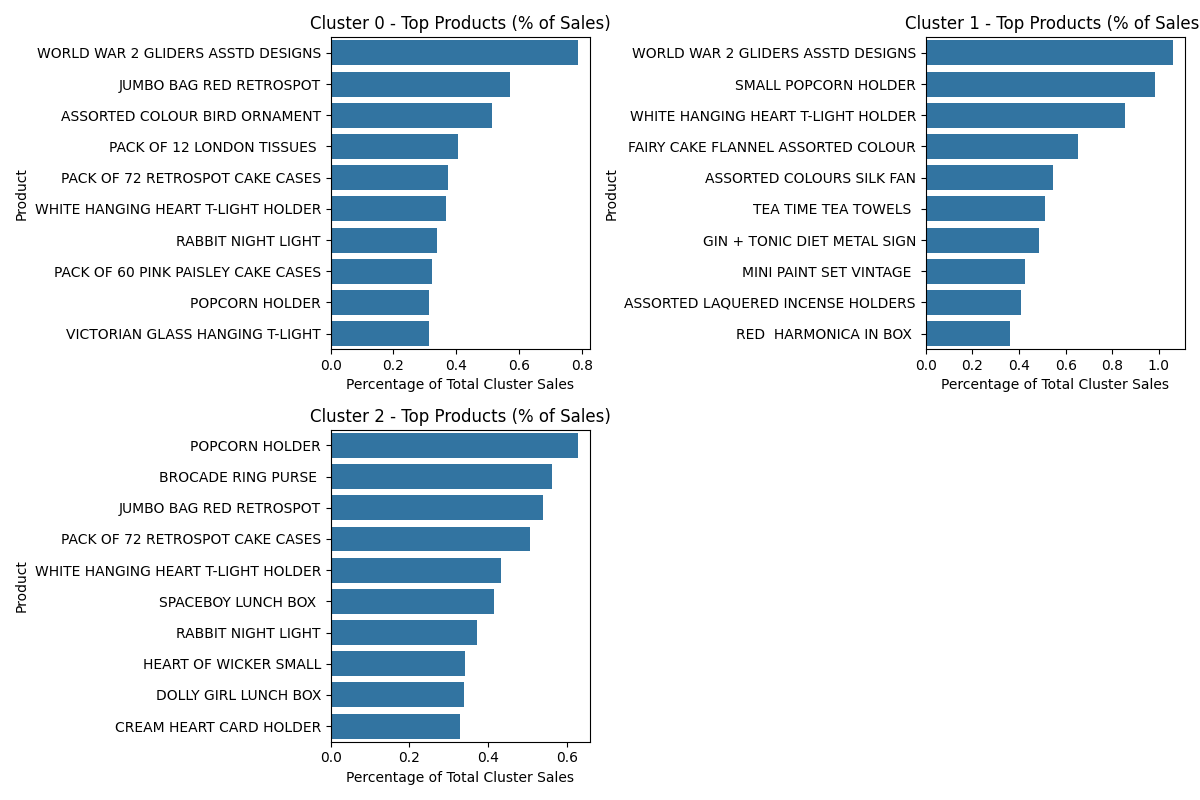Customer Segmentation in Fashion
Unlocking the power of data to understand customer behavior and preferences.
Back to ProjectsProject Overview
Methodology
1. Data Collection
Gathered transactional data, including purchase history, product details, and customer demographics.
2. RFM Analysis
Calculated Recency, Frequency, and Monetary values for each customer to quantify their behavior.
3. Clustering
Applied K-Means clustering to group customers into distinct segments based on RFM metrics.
Customer Segments
| Cluster | Segment Name | Number of Customers | Avg Recency (Days) | Avg Frequency | Avg Total Spending ($) |
|---|---|---|---|---|---|
| 0 | Loyal Customers | 3244 | 39.09 | 5.6 | 1821.84 |
| 1 | High-Value Customers | 1105 | 245.37 | 1.85 | 459.54 |
| 2 | At-Risk Customers | 23 | 5.09 | 86.87 | 81835.86 |
Top Products by Segment
Loyal Customers
- WORLD WAR 2 GLIDERS ASSTD DESIGNS 46487 units 0.79%
- JUMBO BAG RED RETROSPOT 33824 units 0.57%
- ASSORTED COLOUR BIRD ORNAMENT 30322 units 0.51%
- PACK OF 12 LONDON TISSUES 23964 units 0.41%
- PACK OF 72 RETROSPOT CAKE CASES 22099 units 0.37%
- WHITE HANGING HEART T-LIGHT HOLDER 21689 units 0.37%
- RABBIT NIGHT LIGHT 20063 units 0.34%
- PACK OF 60 PINK PAISLEY CAKE CASES 19155 units 0.32%
- POPCORN HOLDER 18558 units 0.31%
- VICTORIAN GLASS HANGING T-LIGHT 18485 units 0.31%
High-Value Customers
- WORLD WAR 2 GLIDERS ASSTD DESIGNS 5377 units 1.06%
- SMALL POPCORN HOLDER 4999 units 0.98%
- WHITE HANGING HEART T-LIGHT HOLDER 4330 units 0.85%
- FAIRY CAKE FLANNEL ASSORTED COLOUR 3320 units 0.65%
- ASSORTED COLOURS SILK FAN 2780 units 0.55%
- TEA TIME TEA TOWELS 2600 units 0.51%
- GIN + TONIC DIET METAL SIGN 2456 units 0.48%
- MINI PAINT SET VINTAGE 2161 units 0.43%
- ASSORTED LAQUERED INCENSE HOLDERS 2067 units 0.41%
- RED HARMONICA IN BOX 1830 units 0.36%
At-Risk Customers
- POPCORN HOLDER 11812 units 0.63%
- BROCADE RING PURSE 10577 units 0.56%
- JUMBO BAG RED RETROSPOT 10173 units 0.54%
- PACK OF 72 RETROSPOT CAKE CASES 9520 units 0.51%
- WHITE HANGING HEART T-LIGHT HOLDER 8128 units 0.43%
- SPACEBOY LUNCH BOX 7818 units 0.42%
- RABBIT NIGHT LIGHT 6986 units 0.37%
- HEART OF WICKER SMALL 6439 units 0.34%
- DOLLY GIRL LUNCH BOX 6362 units 0.34%
- CREAM HEART CARD HOLDER 6184 units 0.33%
Visual Insights
Customer Segmentation

A 3D visualization of customer clusters based on RFM metrics.
Top Products by Cluster

A bar chart showing the most popular products for each segment.
Key Insights
- High-value customers (Cluster 1) contribute disproportionately to revenue and should be targeted with exclusive offers.
- At-risk customers (Cluster 3) have low recency and frequency; re-engagement campaigns are recommended.
- Seasonal buyers (Cluster 4) show a preference for specific product categories, which can inform inventory planning.